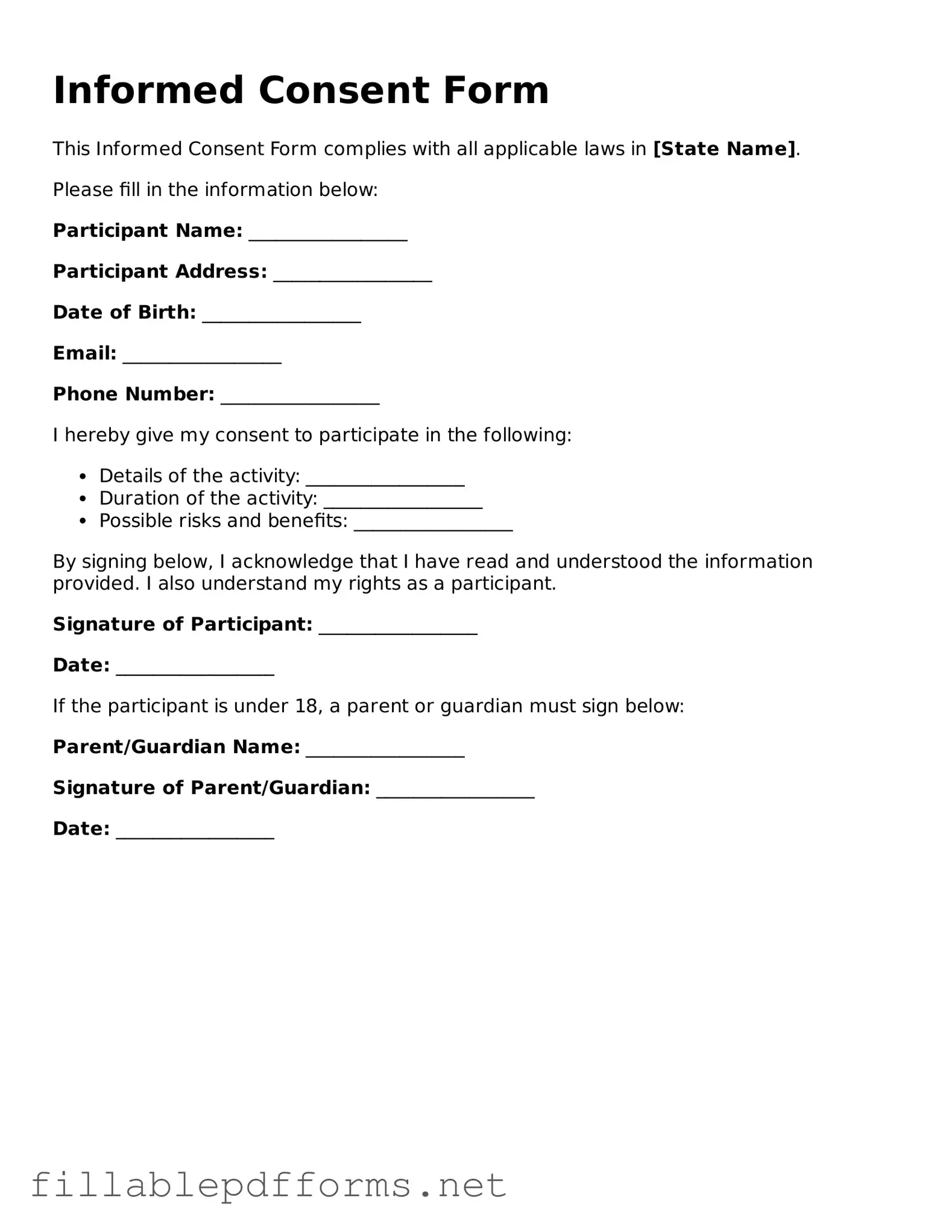Blank Consent Template
A Consent Form is a document that grants permission for an individual to participate in a specific activity or to allow the use of their personal information. This form serves as a vital tool in ensuring that all parties understand their rights and responsibilities. By signing a consent form, individuals acknowledge their awareness of the potential risks and benefits associated with the activity in question.
Launch Editor Here
